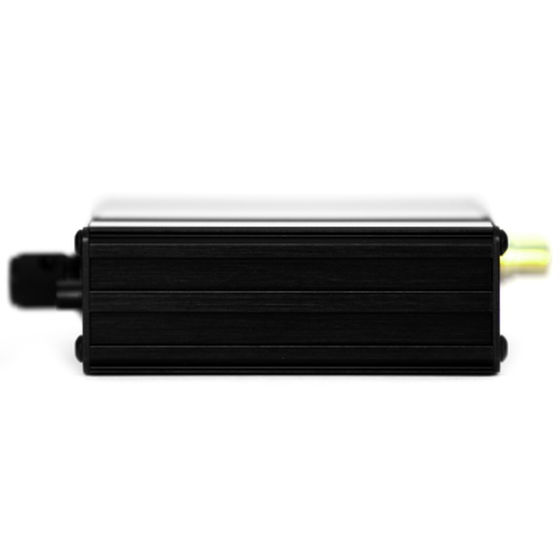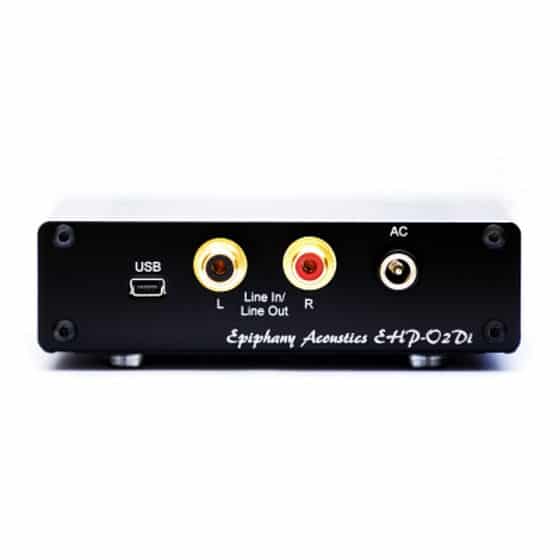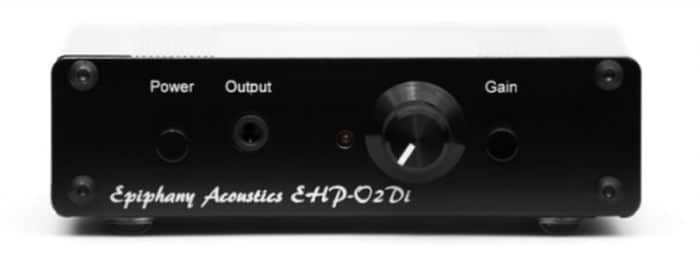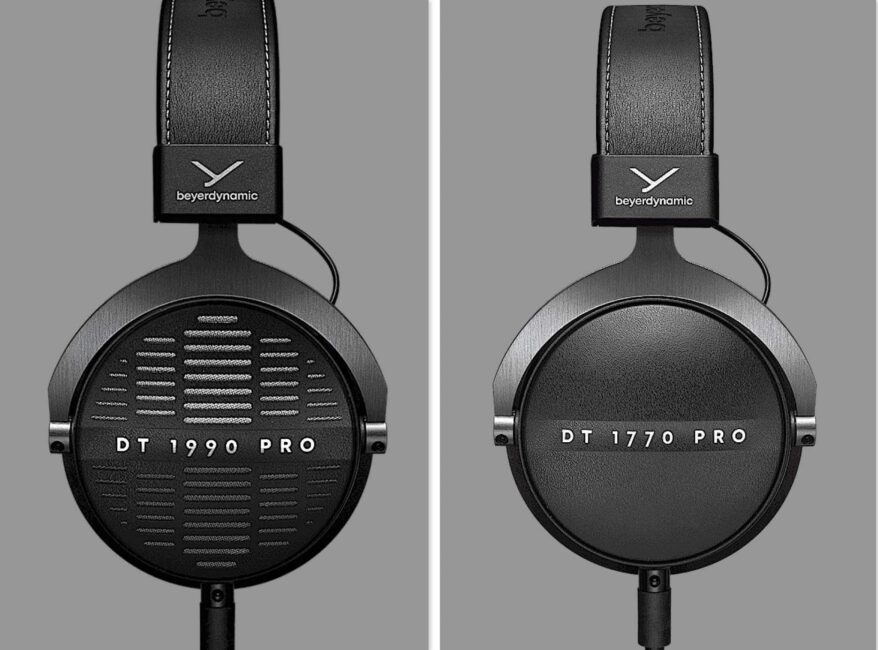The Article
Epiphany Acoustics EHP-O2Di: Two-Fer
31st August 2015
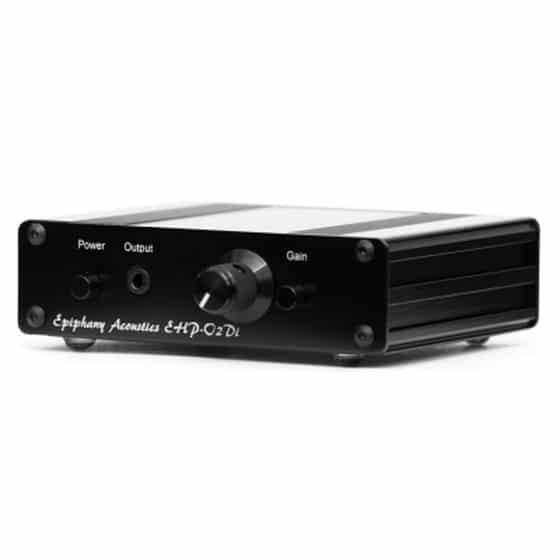
Offering two products in one chassis, Paul Rigby reviews the Epiphany Acoustics EHP-O2Di headphone amplifier and DAC
There is always demand for a small footprint DAC on the market. Too often in our day-to-day music listening, space is a premium so Epiphany’s miniature chassis, spanning 108.5x30x82mm and available in any colour as long as its black, is particular flexible in these terms. The EHP-O2Di, powered by an external wall-wart, is not just a DAC, it also features a headphone amplifier which adds to its inherent usability.
The EHP-O2Di is based on the older EHP-O2D but the power input has been moved to the rear of the unit and there are now rear-mounted RCA sockets which double up as the line input for the headphone amplifier circuitry and the line output from the DAC section.
As MD, Oliver Freeborn commented, “The original amplifier board design catered for portable use and so the power socket (and all sockets) were put on the front. But when it comes to desktop use, it is clearly more convenient to have rear entry power to keep everything neater on your desk. It is something that customers commented on so seemed a logical and natural improvement to make. In addition, RCAs are a natural development to make it more suited to its new desktop environment.”
The DAC, which is clocked via a crystal controlled oscillator, uses a TE7022L UAC1 engine and ES9023 chip offering performance up to 24bit/96kHz. On board filtering for the power supply is included. A higher specification to 24bit/192kHz would have demanded a price hike while additional sockets include a 3.5mm headphone connection and a plug’n’play, mini-USB digital port.
SOUND QUALITY
To begin the sound tests I focused, initially, on the headphone section of the Epiphany and brought in, for comparison, the Furutech X1 headphone amp, which retails at a little over £100 more than the Epiphany.
Playing a WAV of Billy Joel’s ‘My Life’ through the USB and the audiophile software player, Decibel, via my SSD-powered MacBook, I moved from the cultured, spacious X1 to the EHPO2Di and, for the price, was pleasantly surprised at its performance. The amplifier offered a sense of real fun, bringing you right onto the stage among the musicians though, on occasion, piano did expose the midband on the Epiphany, which seemed to be on the verge of shouting at higher volumes. The more expensive X1 easily isolated the rather subtle accompanying acoustic guitar and funky bass right from the off. Surprisingly, so did the Epiphany. Detail, on both of these instruments, was incisive from the latter. The acoustic guitar offered delicately plucked strings while the rhythmic bounce of the bass was easily in evidence. Treble was rather recessed on this track but, what there was of it, was relatively smooth via the Epiphany.
The dynamic ‘Hedonism’ from Skunk Anansie presented that ‘in your face’ midband via Skin’s considered vocal delivery but it also highlighted, to a great degree, the secondary percussion of the tambourine while the lower frequencies, although they could have been a little tighter and controlled, still offered power and slam.
Moving to the DAC part of the Epiphany, I hooked up the Epiphany to my Rega Brio-R and Acoustic Energy Radiance One stand mounted speakers and played a WAV of Stacey Kent’s delicate jazz classic, ‘Les Eaux De Mars’ while comparing the Epiphany to my similarly priced Musical Fidelity V-DAC reference. Immediately, Kent’s vocals had an intrinsic honesty. She stood alone, an airy figure, high in the sound stage while plenty of space surrounded the delicate percussion and guitar backing. Yes, the treble and upper mids lacked the complexity and diversity of information heard by more expensive DACs but the Epiphany, for the price, offered superb all round performance, allowing the piano to glide through the piece while plucked guitar strings were precise and resonant.
Playing the 24bit/96kHz of ‘Let Us Garlands Bring, Op.18’ via Marianne Beate Kielland and Sergej Osadchuk, I was surprised how competent the Epiphany was in tackling the soaring vocals. The lack of slurring of blurring during crescendos along with the control over piano gave the performance a measure of command. Despite the simplification of the presentation and a lack of layering that a more expensive DAC might have provided, the low cost Epiphany allowed the emotion of the performance to remain intact. As the Epiphany concentrated upon the essentials of the performance: the upper mid detail, low frequency solidity and enough emotive nuance to engage the listener.
CONCLUSION
It may only offer a rather prosaic design and the layout and controls might be best described as no better than ‘functional’ but where the Epiphany EHP-O2di scores is under the hood. This is where the budget has been spent and, if you are an audiophile looking for bargain, for that you can be thankful.
Epiphany EHP-O2Di Desktop Headphone Amplifier/DAC
Price: £180
Website: epiphany-acoustics.co.uk
Good: transparency, detail & musicality
Bad: headphone amp midrange glare
RATING: 6/10
REFERENCE SYSTEM
MacBook with SSD
Rega Brio-R amplifier
Music Fidelity V-DAC
Tellurium Q cables
Audio Fidelity Radiance 1 speakers
Sennheiser HD800 headphones

